Introduction
Leupold & Stevens is a US-based optics manufacturer that provides riflescopes, scope mounts, red dot sights, rangefinders, spotting scopes, and binoculars for hunters, tactical shooters, law enforcement agencies, and the US military. Based in Beaverton, Oregon, the sports optics company has remained a family-owned business since the very beginning and is currently operated by the fifth generation of the Leupold family. The company is known to be the oldest sports optics manufacturer in the US.
Leupold Voelpel & Co.
German immigrant Fred Friedrich and his brother-in-law Adam Voelpel originally established the business as a manufacturing workshop for scientific instruments in Portland, Oregon in 1907. Initially called Leupold and Voelpel, the workshop provided manufacturing and repairing services for land-surveying equipment. In 1911, John Cyprian Stevens, a civil engineer, contracted the company for the development of a water-level recorder that he had designed and subsequently patented. The development of the equipment was successful and not long after in 1914, Stevens was made a partner in the company. Consequently, the name of the business was modified to Leupold, Voelpel & Co. to celebrate Steven’s inclusion.

Leopold & Stevens Instruments
Around the same time, Marcus Leupold, son of Fred also became part of the company. Under the partnership, the company continued to develop several innovative types of equipment for land and water survey. J.C. Stevens developed one such invention, Telemark, in 1937 – a water level recorder that could transmit information about the water level in a river or lake via telephone signals. This allowed for an effective remote-monitoring system for water resources. Following the path of his father, Robert Stevens also joined the company in 1939, and consequently, the company undertook the name Leupold & Stevens Instruments. By this time, instruments, such as water flow recorders and stream gauging equipment also became part of the L&S Instruments product line.
Plainsman riflescope and the beginning of sport optics production
Marcus Leupold was an enthusiastic hunter and an outdoorsman in addition to being a successful businessperson. According to a legend, he once missed a shot at a buck when his hunting riflescope suffered from internal fogging. Unhappy with this incident, he swore to develop a better scope someday. Seven years later in 1947, the company successfully marketed the “Plainsman”, the iconic fog-proof riflescope that featured an airtight construction and was nitrogen-processed to improve weather and moisture protection. The buck incident proved to be a turning point in the direction of the company and laid the foundation of the American sports optics brand we know today.
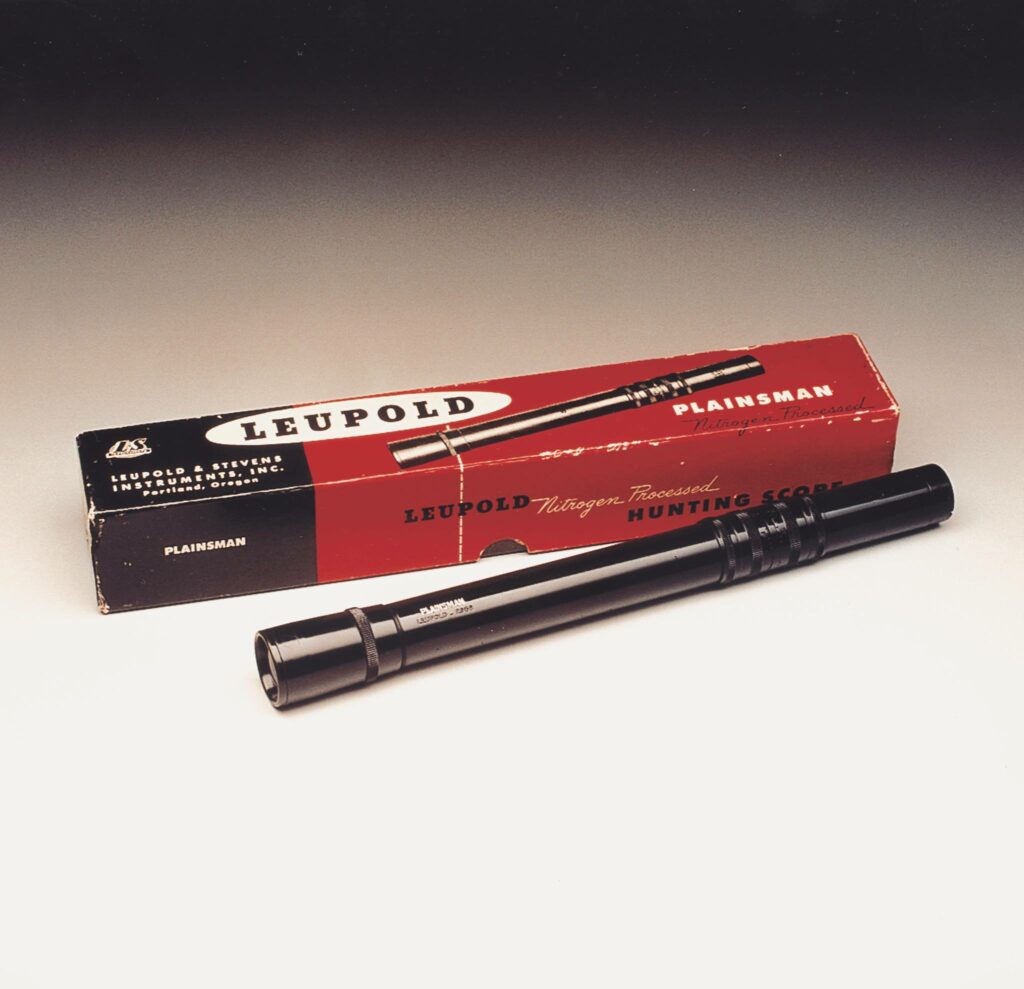
New factory location in Beaverton, Oregon
In 1968, Marcus Leupold handed over the reign of the company to his brother Norbert Leupold, who had already been working for the company for over 25 years. The same year, the factory and headquarters of L&S instruments were relocated from Portland to Beaverton. By 1982, the company had more than 500 employees working on 30 different products.
First Leupold binocular
The American armed forces became a major customer of Leupold riflescopes by 1985. Continued success in the sports optics division prompted the owners to introduce more sport optics products and in 1992, the company introduced the first American-made pair of binoculars, called the Golden Ring Binoculars. This was followed by a variable-power spotting scope in 1993.
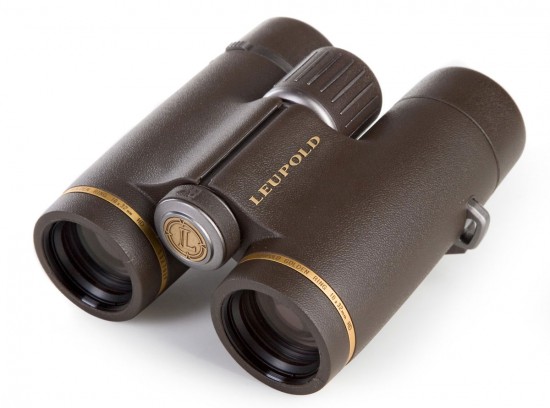
Break-up of Leupold & Stevens Instruments
Surveying instruments, riflescopes, binoculars, and similar equipment were sold under the “Leupold” brand and water measurement devices were marketed under the “Stevens” label until 1998 when the company officially split into two separate businesses. Leupold & Stevens looked after the surveying and optics instruments while the production of water measurement products was taken over by Stevens Water Monitoring Systems Inc., a separate business based out of Portland, Oregon.
Current market position
Leupold & Stevens was deemed as the biggest producer of sport optics products in America until newer companies like Vortex Optics challenged their market standing. At present, it is still considered among the biggest names in sports optics; however, it has followed the footsteps of Vortex and other similar businesses in the production of binoculars. Leupold & Stevens have outsourced the manufacturing of binoculars to factories in Japan and China as a cost-cutting measure. To be completely honest, no other optics manufacturer produces binoculars locally in the US too.
The company acquired the Oregon-based optics manufacturer Redfield Optics along with its brand name and intellectual property rights in 2008. This move enabled the company to increase its line of riflescope and handgun-scopes products.
Production Facilities
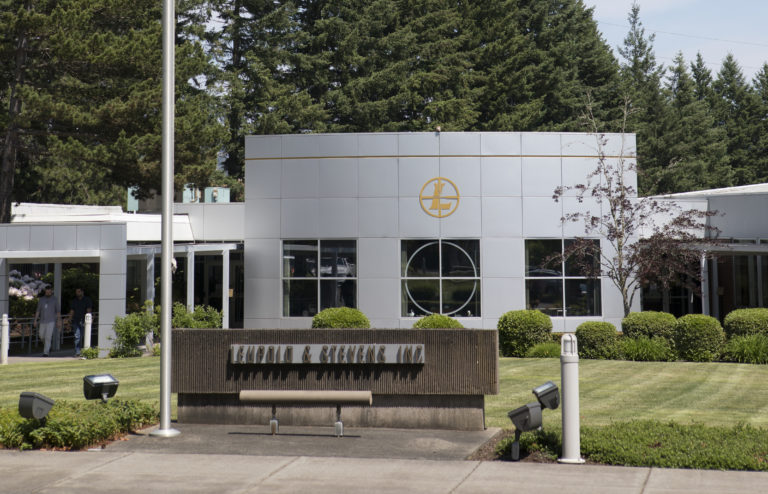
Beaverton, Oregon
Leupold and Stevens currently have over 700 employees at their factory in Beaverton, Oregon. Since the manufacturing of binoculars is outsourced to factories in Japan and China, the US factory mainly focuses on the manufacturing of riflescopes, red dot sights, spotting scopes, rangefinders, and thermal trackers.
- Machine Workshop
The Beaverton factory has a 150,000 square-feet area just for the machining of metal bar stock into main tubes for riflescopes. The on-site raw material storage department is responsible for material procurement and availability. Leupold uses an aerospace-grade Aluminum alloy to manufacture riflescope housings.
The workshop area features numerous computer-controlled machines for high-speed machining. Most of the milling machines are from the notable ‘Index’ brand while the lathe machines used for turning are a mixture of ‘Hardinge’ and other local brands. The resulting metal chips from the machining process are compressed into small cylindrical shapes for further recycling.
The bead blasting process is used to minimize the surface roughness before the housings are sent for anodizing, which is the last step in the mechanical workshop.
- Optics Manufacturing
Just like binoculars, Leupold uses top-quality calcium-fluoride glass material for the riflescope lenses. The designing, manufacturing, and testing of lenses are carried in-house at the Optics Department. Leupold keeps their optics processing methods a secret, so we all are familiar with the very basic processes that take place there.
After the grinding process, the lenses are thoroughly washed before they are sent for multi-coatings. The next step is testing the optical performance of the lenses, which is done both manually and by machines to ensure no defective piece becomes part of any riflescope.
- Assembly
Before individual components reach the clean assembly area, they are cleaned at the sonic cleaning station. The main assembly area features an atmosphere-controlled environment that filters out dust particles from the air. Assembly is the most critical process in the line of optics; therefore, to prevent dirt from entering the optics housings, all workers wear lab coatings, gloves, and hair coverings. All riflescopes are assembled by hand using tools designed at the factory’s tooling department.
- Quality Control
Each workstation at Leupold includes a set of quality control equipment for on-spot inspection. This is true for CNC milling, machines, lathe machines, and all other places where any operation is performed. The adherence to specified geometric tolerances is mandatory for each tube and knob mechanisms, otherwise unfit parts might create problems during the assembly phase.
Optical performance is similarly checked both visually and through the use of interferometers and collimators. In addition to machine inspection, the optical performance of riflescopes is also gauged through an outdoor test board for color, contrast, glare, and chromatic aberration. The real-life test enables quality inspectors to gauge optical performance in key areas.
Assembled products are also subjected to the Punisher recoil testing, which checks the scopes for 5000 impacts at three times the recoil speed of a 0.308 caliber. Only a randomly selected sample of scopes needs to pass this test for the design to be worthy of a lifetime guarantee. The rigorous testing procedures are the reason behind Leupold’s lifetime guarantee on all lines of products.
- Nitrogen Processing
After the products have passed all quality control tests, they are now sent for the final stage of Nitrogen filling after which they are sent for packaging. The Nitrogen processing is followed by weather testing in environmental chambers to ensure devices do not contain a leak.
- Technical Service Department
The service center at Leupold’s headquarters is responsible for responding to numerous calls and emails every day from customers around the world. All team members are avid hunters and shooters, so they are skilled in diagnosing problems and providing solutions over a call without the need for sending the malfunctioning device.

Series Origin
Leupold currently offers a range of binoculars varying from ultra-large to compact and pocket-sized binoculars. The high-end binoculars are manufactured in Japan, whereas the compact, affordable, and entry-level models from Leupold are manufactured in China.
BX-5 Santiam HD
The BX-5 Santiam HD is Leupold’s premium line of binoculars. The binoculars offer Leopold’s Twilight Max HD Light Management technology that enables users to see better in low-light conditions, especially during the winter months. These binoculars feature an ergonomic open-bridge design, a rubber armor, and high-quality glass material, which allows the binoculars to be used for longer periods without fatigue and eyestrain. Additionally, the binoculars are waterproof, and the multi-coatings on lenses solve the glare and abrasion problems associated with binocular lenses.
This model is available in 15×56, 12×50, 10×50, 10×42, and 8×42 models. Santiam binoculars are produced in Japan and are backed with a lifetime guarantee.

BX-2 Alpine
The BX-2 Alpine series is an affordable line of Leupold binoculars that offers many features from the premium series, such as the signature Twilight Max HD Light Management System and an ergonomic lightweight design for comfortable viewing. The housing is mainly made of Magnesium and a rubber armor protects the binoculars from accidental falls. Additionally, the series features a precision-focus system that enables users to adjust the focus in no time.
This model is available in 12×52, 10×52, 10×42, and 8×42 configurations.

BX-4 Pro Guide HD
Manufactured in Japan, the BX-4 Pro series binoculars from Leupold offers a weatherproof design and a rubber armor on top of the aluminum construction for added robustness. The Pro binoculars feature the iconic open-bridge design that allows hunters and shooters to hold their devices for longer periods without fatigue. Since they lie in the premium bracket, some of the prominent features of BX-4 series are calcium-fluoride lens material, BAK-4 glass prisms, multi-coatings and phase coatings for lens and prisms.
This model is available in 12×50, 10×50, 10×42, 8×42, 10×32, and 8×32 configurations.

BX-1 McKenzie
McKenzie binoculars are another series of affordable binoculars by Leupold and Stevens. Their main features are a waterproof and fog proof design, rubber armor, twisting eyecups and lightweight construction for fatigue-free nonstop viewing. Despite their affordable price, these binoculars feature BAK-4 prisms, and multi-coatings and phase coatings for lenses and prisms respectively. We speculate that these binoculars are made in China.
This model is available in 12×50, 10×50, 10×42, and 8×42 models.

BX-1 Yosemite
At an entry-level price, Yosemite binoculars offer a Porro-prism design in a compact housing, which makes it easy to carry everywhere. They also feature the smallest possible inter-pupillary distance in binoculars that makes it ideal for use by kids as well as adults. Even in a compact size, Leupold offers several premium features, such as coated lens and prisms, rubber armor, and a diopter focus mechanism. We speculate that these binoculars are made in China.
This model is available in 10×30 and 8×30 configurations.
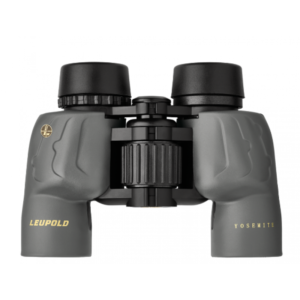
BX-2 Tactical
With a climate-proof construction, the performance of these binoculars is ideal for use in harsh conditions and all kinds of weather. Like the premium Santiam and Pro models, these binoculars offer a comfortable open-bridge design along with a durable magnesium construction. In addition, these binoculars feature calcium-fluoride lenses, BAK-4 glass prisms, and multi-coatings that combine to form the signature Twilight Light management system of Leupold & Stevens Optics. In short, these binoculars provide users with an unparalleled viewing experience in rock-solid housing. We speculate that these binoculars are made in China.
This model is only available in the standard 10×42 configuration.

BX-1 Rogue
A binocular line up is incomplete without a pocket-sized model. Fortunately, all big names in sport optics have an ultra-compact model that users can take anywhere anytime without having to carry an extra bag. Featuring a Porro-prism design, Leupold’s Rogue binoculars are compact enough to be carried in pockets while providing bright images thanks to Leupold’s finest glass components and coating methods. Additionally, the binoculars feature twisting eyecups and a diopter focus mechanism for precise focus adjustments for each eye, all in a compact construction and affordable price. We speculate that these binoculars are made in China.
This model is available in 10×25 and 8×25 models.

Conclusion
Leupold & Stevens is undeniably considered to be among the oldest producers of sport optics in the US. Its current market position is the result of years of innovation and continued adherence to producing top-quality products in all domains, whether it is land surveying, water monitoring, or sport optics. To this day, employees at the company still look up to the saying of Fred Leupold, “Leupold promises to never let down on quality, the customer is entitled to a square deal.”
Since binoculars are not profitable enough to be produced in the US, the company has outsourced the manufacturing of all models to factories in Japan and China, like many other optics brands. Countries like Japan and China have cheap labor in contrast to the US, which makes it possible to market the binoculars at a reasonable price. This, however, does not mean that the binoculars are of poor quality. Products are made under the supervision of trained eyes to obtain the best build quality and viewing experience for consumers.

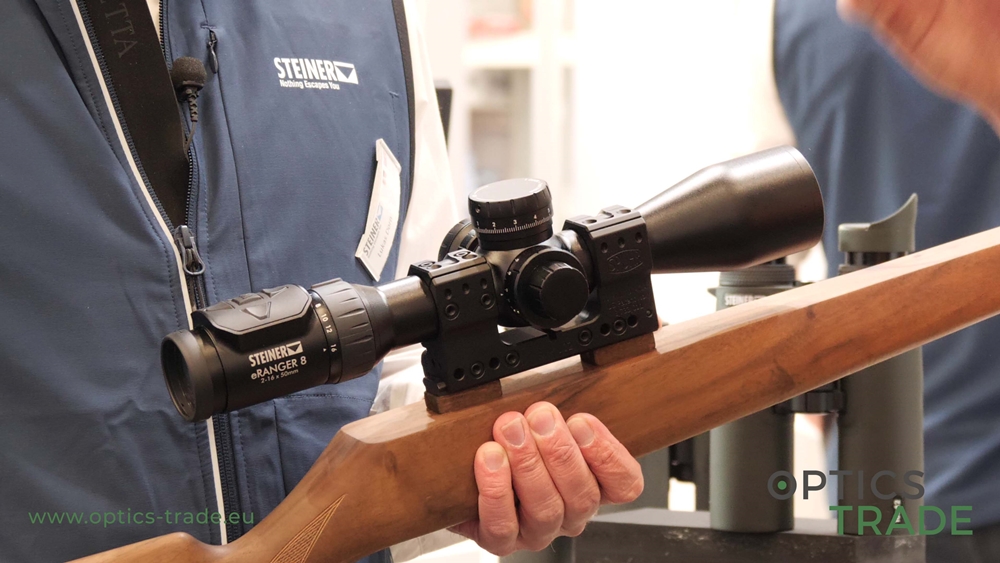
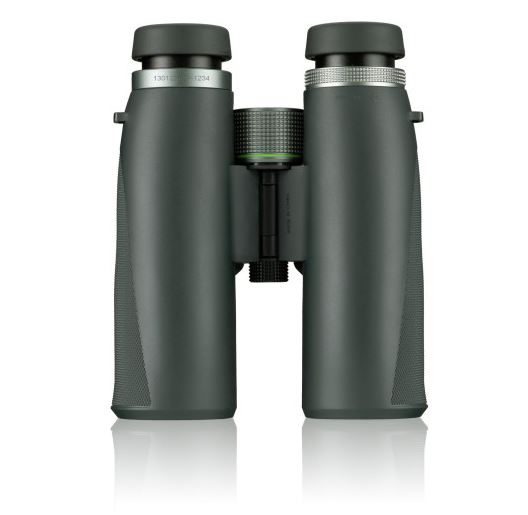


My name is Ron Sturm and I have a Leupold range finder and it is not working right so please tell me where I can send it to get it fixed thanks
I advise you to contact the shop where you purchased it and they will inform you how to proceed.
Where are the Leupold BX2 Binoculars manufactured?
Where are the Leupold BX2 Binoculars manufactured? Recently purchased. New set of Vortex 10X42 Diamondbacks but might consider taking them back if your BX2 is made in Japan.
Really very very informative guide in the first time i heard that Leupold made such great binoculars. I read your guide keep up it.